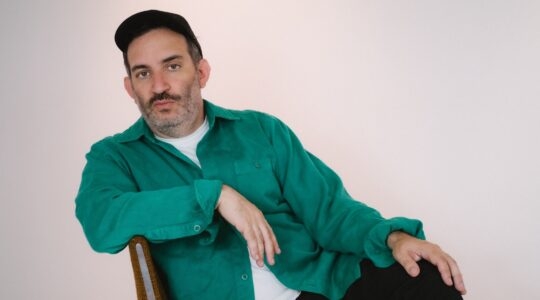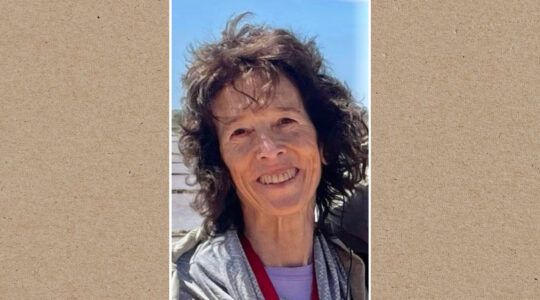During the year that criminologist David Weisburd walked the beat with New York City cops in the Brooklyn neighborhoods of Sunset Park and Windsor Terrace back in 1985, he noticed something peculiar: Crime was concentrated in just a few blocks.
Although each police officer had 20 square blocks to patrol, “they spent all of their time on one or two blocks,” he recalled. “I called that our ‘small world of crime,’ and if they [the police] spent time there, things got better. That contradicted the common wisdom at the time that the police could not prevent crime.”
Weisburd credits the work he did in Brooklyn with setting the stage for his groundbreaking work on “hot spots policing” — concentrating police in high-crime areas to actually deter crime. In fact, one study found that deploying more offices in high crime areas resulted in a 20 percent drop in crime, and more than 20 subsequent studies supported those findings.
Hot spots policing has now been embraced in cities around the world and earned Weisburd many prestigious awards, including the Stockholm Prize (considered criminology’s Nobel Prize); just last month he received Israel’s highest recognition, the Israel Prize in Social Work and Criminological Research.
Now, with a surprising spike in murders being recorded in cities across the country — including a 19.5 percent increase in New York through May of this year compared to a year ago — Weisburd is working on a revision of hot spots policing, one that seeks to convey a friendlier approach.
“He wants to do it in a way that is less offensive,” said Anthony Braga, a professor of evidence-based criminology at the School of Criminal Justice at Rutgers University and a senior research fellow at Harvard Kennedy School who has worked with Weisburd over the years.
“It matters greatly the way people feel about police interaction, regardless of whether they get arrested or ticketed,” he said. “If they believe the officer acted fairly and reasonably, it diminishes their negative feeling about their contact with the police — they feel they are not targeted indiscriminately.”
Weisburd, 60, was born in Brooklyn and grew up in Great Neck, L.I. He made aliyah 23 years ago and is now a professor at the Hebrew University of Jerusalem. Seven years ago he also accepted a tenured appointment at George Mason University in Fairfax, Va.
In bestowing the Israel Prize, the prize committee called Weisburd “one of the most prominent researchers in the field of criminology in the world and among the senior criminologists in Israel. … [His work] helped streamline and improve the quality of life of public citizens. As such, his studies suggest numerous explanations for the formation of crime areas constituting a base for targeted intervention for preventing and dealing with crime.”
Weisburd said he does not know the reason for the recent spike in violent crime here and some other cities. (Some here suggest it stems from tensions between Mayor Bill de Blasio and the NYPD over stop-and-frisk — the mayor believes it wrongly targets minorities — and from the “Black Lives Matter” movement, both of which, the thinking goes, have resulted in a kind of police work slowdown.) But Weisburd said his research has found that the tactic of stop-and-frisk — until recently a main crime-fighting tactic of the NYPD — is a deterrent to crime.
One of his recently completed studies now awaiting publication — a three-year project done as part of a study group at John Jay College of Criminal Justice in Manhattan and supported by the Open Society Foundations — looked into the deterrent value of the city’s stop-and-frisk program. Preeti Chauhan, a research assistant on the project, said Weisburd focused on the “street segment level of crime” as opposed to crime on the precinct level.
It used stop-and-frisk data from the New York City Police Department — such things as the time and location of such stops — and the impact such searches had on crime on a daily, monthly and yearly basis.
Support the New York Jewish Week
Our nonprofit newsroom depends on readers like you. Make a donation now to support independent Jewish journalism in New York.
“This was the most methodologically sophisticated study to determine the impact on crime,” she said.
Weisburd said earlier studies he conducted in five cities — New York (which began hot spots policing under Mayor Rudolph Giuliani in the 1990s), Cincinnati, Sacramento, Seattle and Tel Aviv — found that 50 percent of the crime came from about 5 percent of the streets, and that about 1 percent of the streets produced 25 percent of the crime.
In the study here awaiting publication, Weisburd found that stop-and-frisk was a “hot spots policing strategy.”
He said his work also debunked the belief that crime would move elsewhere if police focused on hot spots. Weisburd said he found that “not only did crime not move around the corner, but around the corner it got better.”
But the chairman of John Jay’s Department of Law and Police Science, Professor Maki Haberfeld, said she is suspicious about such a claim.
“I say that if you saturate an area with police for a period of time, you don’t eliminate crime, you just displace it,” she said. “I ask how many prostitutes who are moved from a particular corner go and get a legitimate job? How many drug dealers who are moved from their spot go out and get a 9-to-5 job? Sometimes they travel a distance to relocate. It’s hard to measure.”
“People want to believe we are succeeding in the war against crime,” Haberfeld added. “But burglaries, street crime — everything is up in a significant way. Talk to any cop on the street.”
But Braga disagreed, saying his review of more than 20 studies found that when “police concentrate their resources in an area, crime can be reduced. … Even though New York is going through a little uptick [in shootings], crime is down throughout the U.S. — and this [hot spot] strategy is responsible for a piece of that downturn.”
The question now is how best to concentrate officers in a high crime area, Braga said, adding that some of the work he did with Weisburd “suggests that community problem solving that changes the reasons why an area is hot might be better [than simply making arrests].”
Weisburd said his work has convinced him that stop-and-frisk should not be used as a general strategy but “only in very specific situations. And it should be used only when it is legal to do so, such as when it’s believed a suspicious person may have committed a crime or there is a gun dropping out of a man’s pants. We want people stopped when it is believed a potentially serious crime is being committed. …”
His proposal for a more just approach to policing — for which he is seeking funding from the National Institute of Justice — involves identifying 40 to 50 hot spots in each of three American cities whose police departments have already agreed to participate (South Bend, Ind.; Milwaukee, Wis., and Wilmington, Del.). One group of police officers would be asked to do traditional hot spots policing. A second group would be given training in how to make the public feel it is treated fairly. Specially trained supervisors would monitor the work of both groups.
“The second group of officers, instead of just saying to someone, ‘Let me look in your pockets,’ would stop the person and say, ‘There have been a lot of robberies and other problems on this street and we are stopping everyone for a few months to make sure they are not carrying a weapon,’” Weisburd explained.
Support the New York Jewish Week
Our nonprofit newsroom depends on readers like you. Make a donation now to support independent Jewish journalism in New York.
“In that way the police are saying that people have been getting hurt over here — which justifies the stop — and that they are stopping everyone, not just singling you out. And if the officer finds contraband, he would say, ‘I’m going to arrest you, but do you have something to add to my report?’ In that way, the officer lets him tell his side of the story. That won’t stop the arrest, but it makes people feel that what is happening is reasonable. The theory is that if people are happy with the police, they will cooperate with them more.”
Haberfeld said she objects to the proposal because it would subject everyone to police intervention.
“That is not a pleasant experience,” she explained. “There is no need for it. … Stop-and-frisk is a legitimate police tool. It should be used based on the discretion of the police officer.”
Weisburd replied that his proposal is a “problematic strategy used broadly; it is appropriate, however, in limited use.”
The New York Jewish Week brings you the stories behind the headlines, keeping you connected to Jewish life in New York. Help sustain the reporting you trust by donating today.




